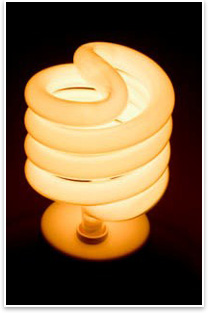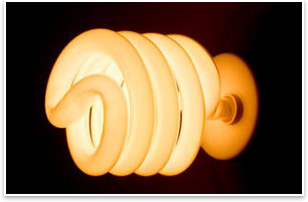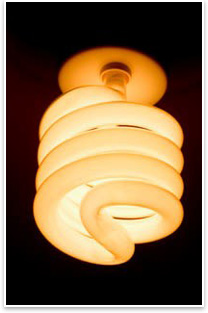Increased Lighting Levels May Slow Dementia, New Study Says
Research indicates another way architects can improve people’s quality of life
by Zach Mortice
Associate Editor
 Summary: A Dutch study published in the Journal of the American Medical Association demonstrated that by increasing the amount of light in assisted living facilities by 50 percent, subjects experienced reductions in cognitive and physical decline and depression, and slept better as well, suggesting that architects and lighting designers should incorporate high amounts of light into their designs for senior and assisted living facilities. These improvements are competitive with the best drug therapies available. Summary: A Dutch study published in the Journal of the American Medical Association demonstrated that by increasing the amount of light in assisted living facilities by 50 percent, subjects experienced reductions in cognitive and physical decline and depression, and slept better as well, suggesting that architects and lighting designers should incorporate high amounts of light into their designs for senior and assisted living facilities. These improvements are competitive with the best drug therapies available.
A study published in the Journal of the American Medical Association indicates that higher amounts of lighting can reduce cognitive decline, depression, and physical deterioration and improve the quality of sleep in senior citizens, posing strong design implications for architects and lighting engineers working on senior and assisted facilities.
 This Dutch study (published in June) took place from 1999 to 2004 and examined the impact of lighting levels on 189 mostly female residents of 12 assisted living facilities. In six of these facilities, higher wattage lamps were installed that generated 1,000 lux (about 93 footcandles), which is 50 percent more light than found in most open office areas. In the other six facilities, indoor lighting levels were reduced to 300 lux, or about 30 footcandles. Additionally, all members of the 1,000 lux group were either given a dose of melatonin or a placebo, as were the 300 lux group. Melatonin accumulates in the blood during sleep and then drops during the day with exposure to light. It acts as an antioxidant that helps to regulate the body’s sleep-wake patterns. This Dutch study (published in June) took place from 1999 to 2004 and examined the impact of lighting levels on 189 mostly female residents of 12 assisted living facilities. In six of these facilities, higher wattage lamps were installed that generated 1,000 lux (about 93 footcandles), which is 50 percent more light than found in most open office areas. In the other six facilities, indoor lighting levels were reduced to 300 lux, or about 30 footcandles. Additionally, all members of the 1,000 lux group were either given a dose of melatonin or a placebo, as were the 300 lux group. Melatonin accumulates in the blood during sleep and then drops during the day with exposure to light. It acts as an antioxidant that helps to regulate the body’s sleep-wake patterns.
The study subjects (most of whom already exhibited symptoms of dementia) in the six 1,000 lux environments experienced a 5 percent reduction in cognitive decline, a 19 percent reduction in depression, and a 53 percent reduction in physical decline. A 5 percent reduction in dementia may sound insignificant, but the most effective drug therapies for Alzheimer’s and dementia offer similar results. The combination of the light therapy and melatonin treatment also increased the amount of uninterrupted sleep patients got and reduced agitated behavior. This combination of treatments is cheaper and much less invasive than traditional drugs. “There are absolutely no side effects,” says John Bachner, spokesperson for the National Lighting Bureau.
 Design, not quantity Design, not quantity
One of the study’s authors, Eus Van Someren of the Netherlands Institute of Neuroscience, says that this means that people should live in a better lighted environment. Though the study examined electric illumination, Van Someren thinks that natural light might be even more effective at ameliorating symptoms of dementia. “I'd favor building in a way that lets in light rather than electric illumination solutions,” he says, via e-mail from his office in Amsterdam.
Bachner says that this proposed change in lighting, electric or natural, doesn’t require adding excessive light to indoor spaces. It’s about design quality, not quantity. “You’re not going to notice it if it’s well designed,” he says.
Though Bachner says he doesn’t know of any architecture firms or lighting designers already incorporating this research into their work, the best way for them do this is to use control systems that give users fine-tuned control over lighting levels, so as not to waste energy when it’s not needed. This research implication pushes progressive assisted living facility design practices away from typical sustainable building practices based on reducing energy use at all costs. If this research is reinforced and reconfirmed, the two will have to compromise and adjust to each other.
 Future directions Future directions
The results of this study indicate a host of possible directions for future research. Examples could include looking at how this light therapy could be used preventatively on people before they are in danger of developing Alzheimer’s or dementia or varying the levels and duration of people’s exposure to increased lighting levels. Van Someren has already begun to investigate whether increased lighting levels given twice a day for two years can help early-stage Alzheimer’s patients still living at home. This line of research began with observations of neuron activity in the hypothalamus of brains of deceased people, where less neurons were biologically active in elderly people with dementia. From there, Van Someren says, colleagues started investigating whether neurons could be activated in animals with light.
Such work becomes even more important now than it ever could have been, as people spend much more time indoors than previous generations—in the domain of architects. |


 Summary:
Summary:

